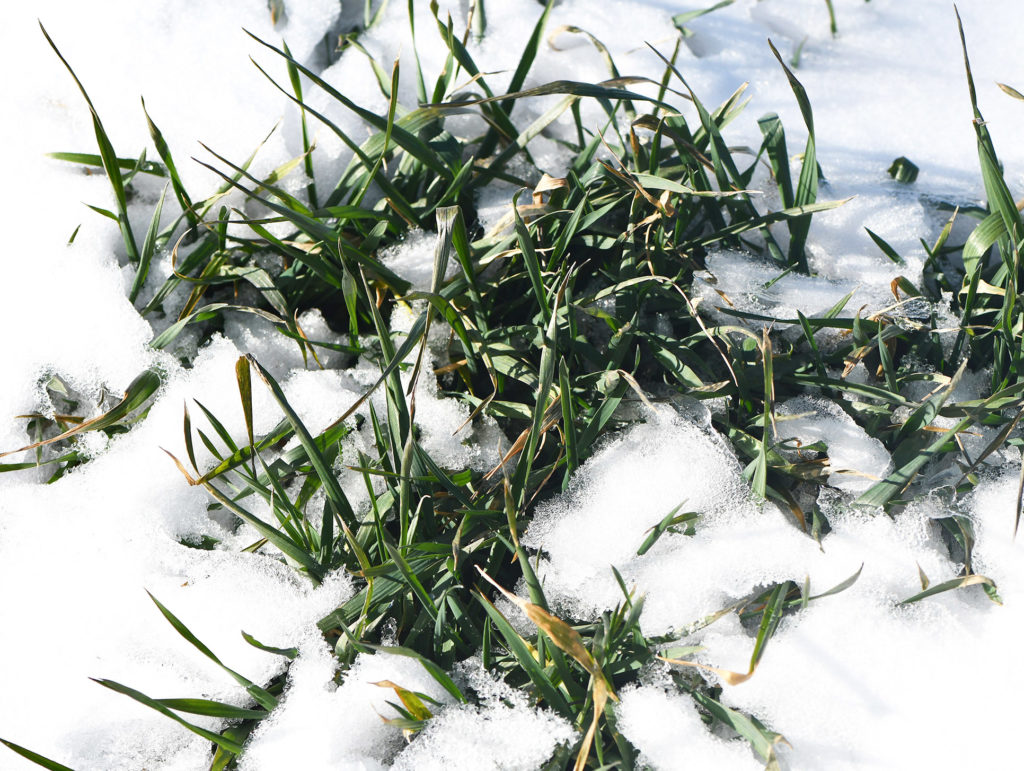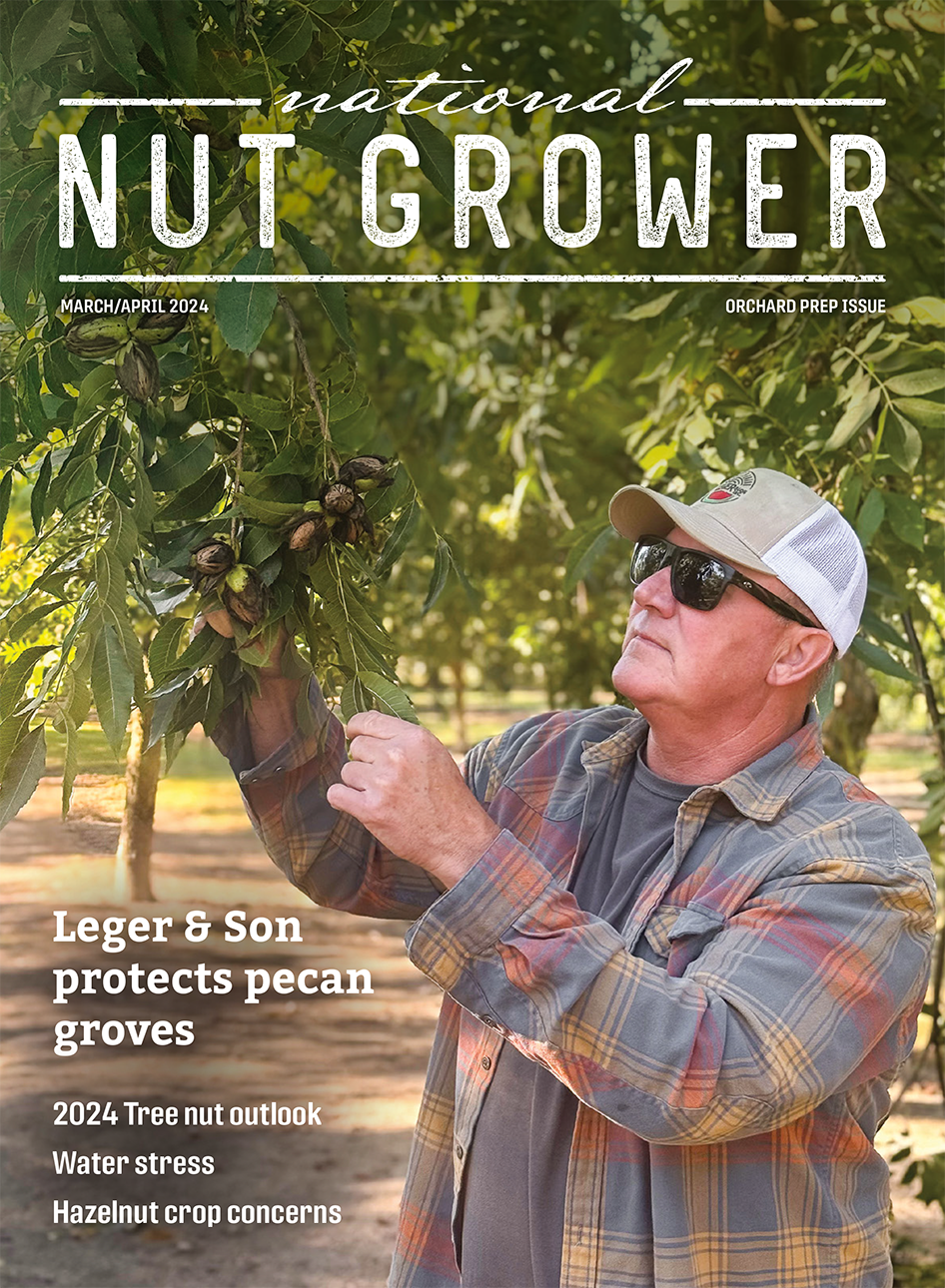AgriLife Extension district reporters compiled the following summaries:

CENTRAL
Single-digit and negative temperatures created havoc for livestock producers. Despite producers’ best efforts, most agriculture wells froze, and cattle and livestock operations without tanks were forced to find and haul water. Those with tanks were chipping through a layer of ice at least twice daily so livestock could drink. Many beef, sheep and goat producers were calving, kidding and lambing when the front arrived. There was no accurate accounting of losses at this time, but losses were expected. It was very difficult to keep equipment running. Livestock were in fair condition. Producers expected near complete loss of oats, and substantial losses on other small grains. One earlier-planted winter wheat field showed signs of frosted tillers. Plants were expected to recover as growing points were likely protected by snow cover before cold temperatures caused damage. Exposed ridges in other fields exhibited more crop injury and frosted tillers. The most common crop injury was to oats, which showed substantial chlorosis with 30% or more frosted tops, and likely was expected to have some whole plant injury and require green-up. Topsoil moisture was adequate to saturated. Most fields were ready to plant once it warms up. Heavy damage to tropical foliage landscapes was noted. More than half the district reported poor pasture and rangeland conditions.
ROLLING PLAINS
Temperatures dropped to -6, and wind chills reached -20 in places. Some areas received up to 12 inches of snow. Cattle and livestock fared reasonably well in general, as producers provided plenty of hay and protein. Watering was a challenge, and producers were breaking ice frequently. Much of the ice was about 4 inches thick each day. The damage to winter wheat will be assessed in the coming weeks.
COASTAL BEND
The area experienced five consecutive days of ice, sleet, snow and temperatures in the teens and 20s. Agriculture water systems and equipment suffered significant damage. Weather conditions made it difficult to feed cattle when diesel tractors would not start. Livestock producers scrambled to feed and care for animals. Power outages created water issues for livestock due to water wells being offline or frozen. Most ponds, tanks and troughs were frozen over. Livestock producers were feeding hay and supplemental feed, and finding additional rations needed was a challenge. Feed stores were short on inventory, and some that had protein and hay were forced to limit individual purchases. No significant livestock losses were reported, but all animals were negatively impacted by the arctic front, and some newborn calves died. Oats, ryegrass and fruit trees that broke dormancy early froze. Emerged corn will require replanting. No fieldwork was accomplished during the storm, but producers were busy preparing beds and applying fertilizer and controlling weeds. Corn planting was expected to resume with good soil moisture and temperatures. Sorghum plantings were expected to follow.
EAST
As much as 12 inches of snow and ice fell across the district. Producers reported the loss of calves, goats, sheep and chicks. Nurseries and greenhouses suffered tremendous losses as well. Damage to structures and farm equipment was reported by many producers. Cool-season forages took a big hit. Pasture and rangeland conditions were fair to poor. Subsoil and topsoil conditions were adequate to surplus.
SOUTH PLAINS
The arctic front was very hard on livestock and feed supplies, but the snow represented some moisture. Cattle were in decent condition. Producers were preparing for planting.
PANHANDLE
Temperatures were as low as -13 degrees with 8-12 inches of snow. Soil moisture conditions were short to very short. Pasture and rangeland conditions were poor to very poor. Winter wheat was in fair to poor condition, and oat condition was fair. Beef cattle producers struggled to feed livestock and maintain water supplies during the extreme cold. Some cow-calf producers reported losing calves born during this event, but most operations were prepared and managed well. Stocker cattle gains on wheat were at a standstill, but compensatory gains were expected as temperatures warmed.
NORTH
Topsoil moisture throughout the district was adequate to surplus. Winter storms delivered 8-12 inches of snow. Everything was covered in snow or ice for three days. Bitter cold forced producers to feed and get water to livestock. Feed stores were running out of hay and feed. Tanks froze over and livestock were lost as they ventured onto frozen water sources. Assessment of crop losses was underway. The soil was saturated, and many areas were standing in water. The forecast called for sunshine and warmer temperatures, which should help winter wheat recuperate from the harsh temperatures.
FAR WEST
Temperatures averaged highs in the upper 60s to lows in the negative single digits. Precipitation in the form of rain, sleet and snow were reported. Rain averaged less than 0.5 inch, and snow accumulation measured between 1-8 inches. Homeowners and producers reported damage from busted pipes and heavy snow fall. Livestock had to haul water and feed and increased hay and protein rations. Beef cattle and goat producers reported a few newborn losses and premature births. Cattle were still in overall good condition. Winter wheat and oat conditions were average to poor. Wheat does not appear to have suffered any winter kill, but the full effects will not be known for another week or so. Vegetable producers reported frozen crops. Most pecan trees were hedged, so there was very little to no limb breakage from snow and ice. No fieldwork was done. There was some damage to irrigation systems. In El Paso, preparations for cotton planting continued though acreage was expected to be cut by 30% due to reservoir water levels. Effluent water from the city of El Paso was being used to irrigate some pecan orchards. Cotton acres will be pre-irrigated soon.
WEST CENTRAL
Extreme cold weather with ice and snow occurred. Low temperatures were in the -5 to -10 degree range, with highs below freezing for nine consecutive days. Winter wheat conditions declined due to cold weather. Livestock producers reported some animal losses, averaging 5-15 head per producer. There were many broken water lines, and watering issues continued. Rangeland and pasture conditions were mostly fair following the winter storm. Loss assessments continued.
SOUTHEAST
Historic losses were expected following the winter storm. Moisture created sloppy field conditions. Pasture and livestock conditions were poor. Livestock were recovering from severe stress from weeklong snow, ice and freezing rain. Hardin County producers struggled to find hay supplies because bale stocks were damaged, and feed supplies were short because trucks were not running. Producers struggled to get livestock feed as the trucks were not running. Families were struggling without water and/or power, and producers were struggling to supply water to livestock due to frozen or broken pipes. Some livestock losses were reported. Rangeland and pasture ratings were fair to very poor with fair ratings being the most common. Soil moisture levels ranged from adequate to surplus with adequate levels being the most common.
SOUTHWEST
Extreme winter weather conditions brought up to 11 inches of snow to parts of the district. Low temperatures in the single digits were reported for multiple days. Rangeland and pasture conditions declined. Producers provided heavy supplementation for livestock and hauled water during the winter storm. The extent of agriculture losses caused by the storm were being assessed. Gillespie County estimated 30% loss of limbs on trees due to ice, a 5% loss of livestock and a 50% loss of free-range black buck and axis herds. Producers were assessing peach losses.
SOUTH
Temperatures reached 16 degrees. Jim Wells County reported 42 hours of below-freezing temperatures. Cold temperatures hurt native and improved vegetation. Rain, light snowfall and wintery mix were reported. Roads were icy, and fields were difficult for producers to access. Maverick County reported 4-8 inches of snow. Soil moisture levels were mostly short to adequate in northern areas and short to very short in southern parts of the district. Wheat and oat damages were expected due to the winter storm. Producers provided heavy rations of supplemental feed during the arctic front. Rangeland and pasture conditions declined dramatically. There was little to no browsing or grazing available for livestock and wildlife. Livestock producers faced hay shortages and water issues. Freezing temperatures impacted early planted corn and sorghum, and replanting will be necessary. No significant cattle or livestock losses were reported. Some home citrus trees experienced total fruit loss, and many homeowners will lose trees. Commercial citrus fruit and vegetable crops were damaged. Willacy County reported damage to all leafy vegetables. Swiss chard, cilantro, onions, turnips, cabbage and more were mostly, if not completely, lost. Citrus trees were reported to be burnt from the freeze, but it is unclear if mature or young trees will make it to the next growing season. About 10% of row crops were planted in February and lost due to freezing temperatures. Losses to the onion crop were expected. Freeze damage and continued drought were expected to put pressure on cattle producers to provide increased supplemental feed until grasses recover.
– Adam Russell, Texas A&M University
Snow-covered wheat in the High Plains. Photo: Kay Ledbetter/Texas A&M AgriLife








